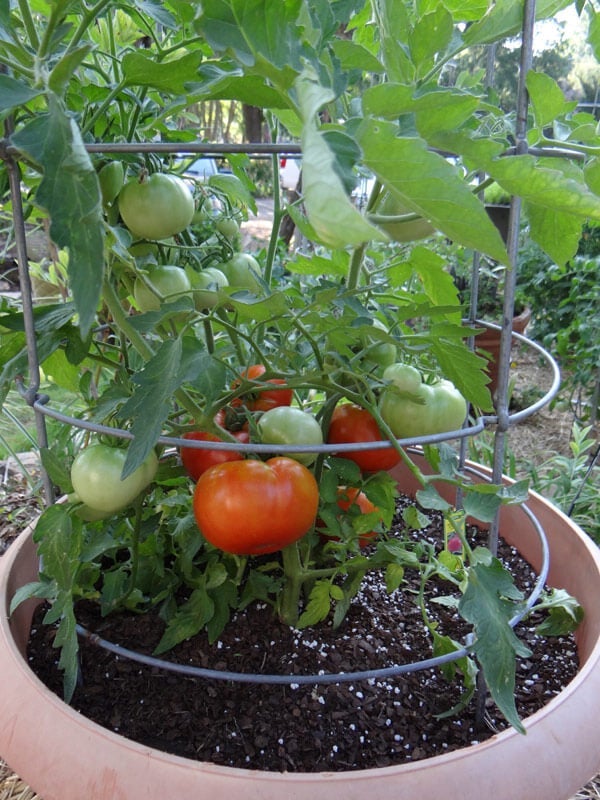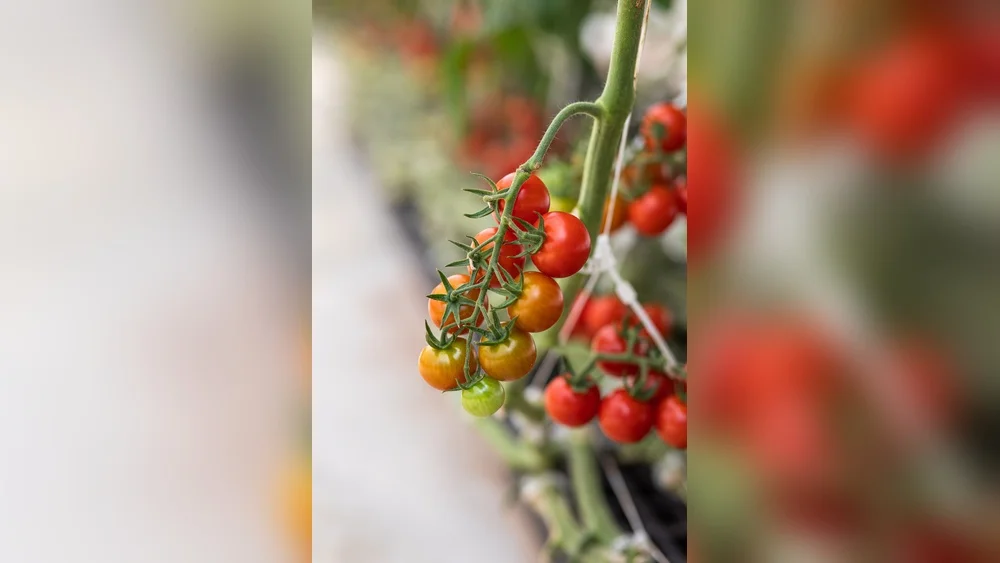If you want juicy, homegrown tomatoes bursting with flavor, timing is everything—especially in Northwest Florida. Planting your tomato seedlings at the right moment can mean the difference between a bountiful harvest and struggling plants.
You might be wondering: When exactly is the best time to plant tomatoes here? How do the local climate and seasonal changes affect your tomato garden? You’ll discover the perfect planting windows, smart tips to beat the heat and humidity, and which tomato varieties thrive in Northwest Florida’s unique conditions.
Get ready to grow healthier plants and enjoy tastier tomatoes all season long!

Credit: www.revivalgardening.com
Tomato Planting Seasons
Tomatoes thrive best when planted after the last frost in Northwest Florida, usually in February. Early planting helps plants avoid the summer heat and produce more fruit. Choosing the right time ensures healthy growth and a better harvest.
Tomatoes grow best when planted during specific seasons in Northwest Florida. The timing affects how well plants develop and how many fruits they produce. Understanding the right planting seasons helps gardeners enjoy a healthy, abundant harvest. Tomatoes need warm soil and air to thrive but not too hot to stop fruiting. Planting at the right time avoids frost damage and heat stress.
Northwest Florida Timing
Northwest Florida has a mild climate with a short frost period. The last frost usually ends in late February or early March. This timing allows planting tomatoes outdoors soon after. Soil warms up enough for roots to grow strong. Planting too early risks frost damage. Late planting risks heat stress and fewer tomatoes. Gardeners must watch local weather for safe planting dates.
Early Spring Planting
Early spring is the most popular time to plant tomatoes here. Start seeds indoors in January or February for best results. Transplant seedlings outside after the last frost. This period gives plants time to grow before hot summer days. Tomatoes planted in early spring can produce fruit by late spring or early summer. Water regularly and use mulch to keep soil moist.
Fall Planting Window
Fall planting is a good option in Northwest Florida. Tomatoes planted in late August or September can grow well. The cooler fall weather helps plants avoid summer heat stress. Fall tomatoes often produce fruit into winter. Choose heat-tolerant or disease-resistant varieties for fall planting. Protect young plants from early cold snaps with covers or mulch. Fall planting extends the tomato season.

Credit: bonnieplants.com
Choosing Tomato Varieties
Choosing the right tomato varieties is crucial for success in Northwest Florida. This region has unique climate challenges. High heat and humidity affect tomato growth. Selecting varieties that handle these conditions well improves yield and taste. Focus on heat tolerance, disease resistance, and flavor preferences. These factors help gardeners grow healthy tomato plants that produce abundant fruit.
Heat-tolerant Cultivars
Heat-tolerant tomato varieties thrive in warm temperatures. They continue to produce fruit even during hot spells. Varieties like ‘Heat Wave II’ and ‘Solar Fire’ perform well in Northwest Florida’s summer heat. These cultivars resist flower drop caused by high temperatures. They keep fruit setting steady when other types fail. Planting heat-tolerant tomatoes ensures a longer harvest season.
Heirloom Options
Heirloom tomatoes offer unique flavors and colors. Popular heirlooms include ‘Cherokee Purple’, ‘Green Zebra’, and ‘Mortgage Lifter’. These varieties add diversity to your garden. They may need extra care in heat and humidity. Plant heirlooms in cooler months or provide shade during peak heat. Their rich taste and history make them a favorite for many gardeners.
Disease-resistant Types
Disease-resistant tomato varieties reduce problems from fungi and bacteria. Look for types labeled resistant to blight and powdery mildew. ‘Celebrity’ and ‘Amelia’ are good examples. Resistant varieties survive better in humid conditions common in Northwest Florida. They require less chemical treatment and less effort. Choosing disease-resistant types helps maintain plant health and fruit quality.
Soil Preparation Tips
Preparing the soil properly before planting tomatoes in Northwest Florida is essential. Healthy soil helps tomato plants grow strong and produce more fruit. Taking time to improve soil quality gives your tomatoes a better start. Focus on nutrient levels, soil acidity, and drainage to create the best environment for tomato roots.
Nutrient Amendments
Tomatoes need rich soil with plenty of nutrients. Add compost or well-rotted manure to supply organic matter. These materials improve soil texture and add nutrients slowly. Use a balanced fertilizer with nitrogen, phosphorus, and potassium. Work these into the top 6 inches of soil before planting. Avoid too much nitrogen as it causes more leaves than fruit.
Adjusting Soil Acidity
Tomatoes grow best in soil with a pH between 6.0 and 6.8. Test your soil’s pH before planting. If the soil is too acidic, add lime to raise the pH. For alkaline soils, add sulfur or peat moss to lower the pH. Proper pH helps plants absorb nutrients efficiently. Adjusting acidity improves tomato growth and fruit quality.
Improving Drainage
Good drainage prevents water from pooling around tomato roots. Heavy or clay soils hold too much water, which can cause root rot. Mix sand or organic matter like compost into the soil to improve drainage. Raised beds also help water drain faster. Well-drained soil keeps roots healthy and supports strong tomato plants.

Credit: www.revivalgardening.com
Planting Techniques
Planting tomatoes in Northwest Florida demands smart techniques for strong, healthy plants. The right methods improve growth and fruit yield. Understanding seed starting, spacing, and plant care helps every gardener succeed.
Seed Starting Vs. Transplants
Starting tomato seeds indoors gives plants a head start. It allows control over temperature and moisture. Transplants, bought or grown from seed, reduce time in the garden. Plant transplants after the last frost in February. Seed starting is best done 6-8 weeks before transplanting outside. Both methods work well but transplants often produce fruit faster.
Spacing And Depth
Space tomato plants 18 to 24 inches apart. This spacing allows air circulation and prevents disease. Plant tomatoes deep, burying two-thirds of the stem. This encourages strong root growth. Remove lower leaves before planting to reduce rot. Proper depth and spacing boost plant health and fruit production.
Staking And Pruning
Staking supports tomato plants and keeps fruit off the ground. Use stakes or cages at planting time. Prune suckers, the shoots between the main stem and branches. Pruning focuses energy on fruit, not extra leaves. Regular pruning and staking prevent disease and improve harvest quality.
Watering And Care
Proper watering and care are vital for healthy tomato plants in Northwest Florida. The region’s warm climate can cause soil to dry quickly. Consistent moisture helps tomatoes grow strong and produce tasty fruit. Understanding how to water and care for your plants prevents common problems and supports good harvests.
Consistent Watering Schedules
Tomatoes need regular watering to keep soil evenly moist. Water deeply once or twice a week instead of shallow, frequent watering. This encourages strong root growth. Early morning watering reduces evaporation and leaf diseases. Avoid watering leaves directly; focus on soil near the roots.
Preventing Blossom End Rot
Blossom end rot causes dark spots on tomato fruits. It happens from calcium shortage and uneven watering. Keep soil moisture steady to prevent this. Use mulch to retain water and add calcium-rich amendments if needed. Healthy soil and consistent watering reduce risks significantly.
Mulching Benefits
Mulching helps keep soil moist and cool. It stops weeds from competing with tomato plants. Organic mulches like straw or wood chips add nutrients as they break down. Mulch also reduces soil splash, lowering disease risks. Spread mulch around the plants but not against the stems.
Pest And Disease Management
Managing pests and diseases is key to growing healthy tomato plants in Northwest Florida. The region’s warm, humid climate creates ideal conditions for many pests and fungal diseases. Taking preventive steps helps protect your tomato crop and boosts yield. Understanding the common threats allows you to act quickly and reduce damage.
Common Pests In Northwest Florida
Tomato plants in Northwest Florida face pests like aphids, whiteflies, and tomato hornworms. Aphids suck plant sap, causing leaves to curl and yellow. Whiteflies spread viral diseases and weaken plants by feeding on leaves. Tomato hornworms eat leaves and fruit, leaving large holes. Early detection is critical to limit harm. Inspect leaves regularly for pests or eggs. Use insecticidal soaps or neem oil to control infestations safely.
Fungal Disease Prevention
Fungal diseases such as early blight, late blight, and powdery mildew thrive in humid conditions. These diseases cause leaf spots, fruit rot, and defoliation. Plant tomatoes in well-drained soil with good air circulation to reduce humidity around plants. Avoid overhead watering to keep leaves dry. Rotate tomato crops yearly to prevent soil-borne diseases. Remove and destroy infected plant debris immediately to stop spread.
Natural Remedies
Natural methods offer safe pest and disease control options. Companion planting with basil or marigolds repels harmful insects. Spraying a mixture of water and mild dish soap can remove aphids and whiteflies. Baking soda sprays help prevent powdery mildew by changing leaf surface pH. Introducing beneficial insects like ladybugs and lacewings reduces pest populations naturally. These remedies keep your garden healthy without harsh chemicals.
Harvesting Tips
Harvesting tomatoes at the right time improves flavor and texture. It also helps the plant keep producing more fruit. In Northwest Florida, the warm climate means careful harvesting can extend your tomato season. Knowing when and how to pick tomatoes is key to a successful harvest.
Signs Of Ripeness
Tomatoes are ready to pick when their color is full and even. Look for deep red, pink, orange, or yellow shades depending on the variety. The fruit should feel slightly soft but still firm. Avoid picking tomatoes that are green or very hard. A ripe tomato will have a sweet smell near the stem.
Best Harvesting Practices
Use clean hands or scissors to pick tomatoes gently. Twist or cut the stem above the fruit to avoid damage. Pick tomatoes in the morning when temperatures are cooler. Handle the fruit carefully to prevent bruising. Store tomatoes at room temperature away from direct sunlight for best taste.
Extending The Harvest Period
Pick tomatoes regularly to encourage new growth and fruit. Remove any diseased or yellow leaves to keep plants healthy. Use mulch to keep soil moist and reduce weeds. Shade plants during the hottest part of the day to prevent sunscald. Prune lower branches to improve air flow and reduce pests.
Frequently Asked Questions
When To Plant Tomatoes In Northwest Florida?
Plant tomatoes in Northwest Florida from mid-February after the last frost for best yield. Plant again in September for fall crops. Choose heat-tolerant varieties to thrive during warmer months. Ensure consistent watering and soil nutrients to prevent blossom end rot.
What Are The Best Tomatoes To Grow In Northwest Florida?
The best tomatoes for Northwest Florida include ‘Better Boy’, ‘Celebrity’, and heat-tolerant ‘Heat Wave II’. Heirlooms like ‘Cherokee Purple’ also thrive. Choose disease-resistant, heat-tolerant varieties for success in Florida’s climate.
Why Should You Sprinkle Baking Soda Around Your Tomato Plants?
Sprinkling baking soda around tomato plants reduces soil acidity and helps prevent fungal diseases. It promotes sweeter, healthier tomatoes.
Can You Plant Tomatoes In October In Florida?
Yes, plant tomatoes in Florida in October. South and Central Florida have ideal conditions after summer heat. Choose disease-resistant, heat-tolerant varieties. Water consistently and provide support to prevent blossom end rot and promote healthy growth.
Conclusion
Planting tomatoes in Northwest Florida requires timing and care. Start seeds after the last frost in February. Choose varieties that handle heat and humidity well. Keep soil moist and add nutrients to avoid common problems. Support plants with stakes as they grow tall.
Following these steps helps you enjoy fresh tomatoes all season. Enjoy your gardening journey and the tasty rewards!

